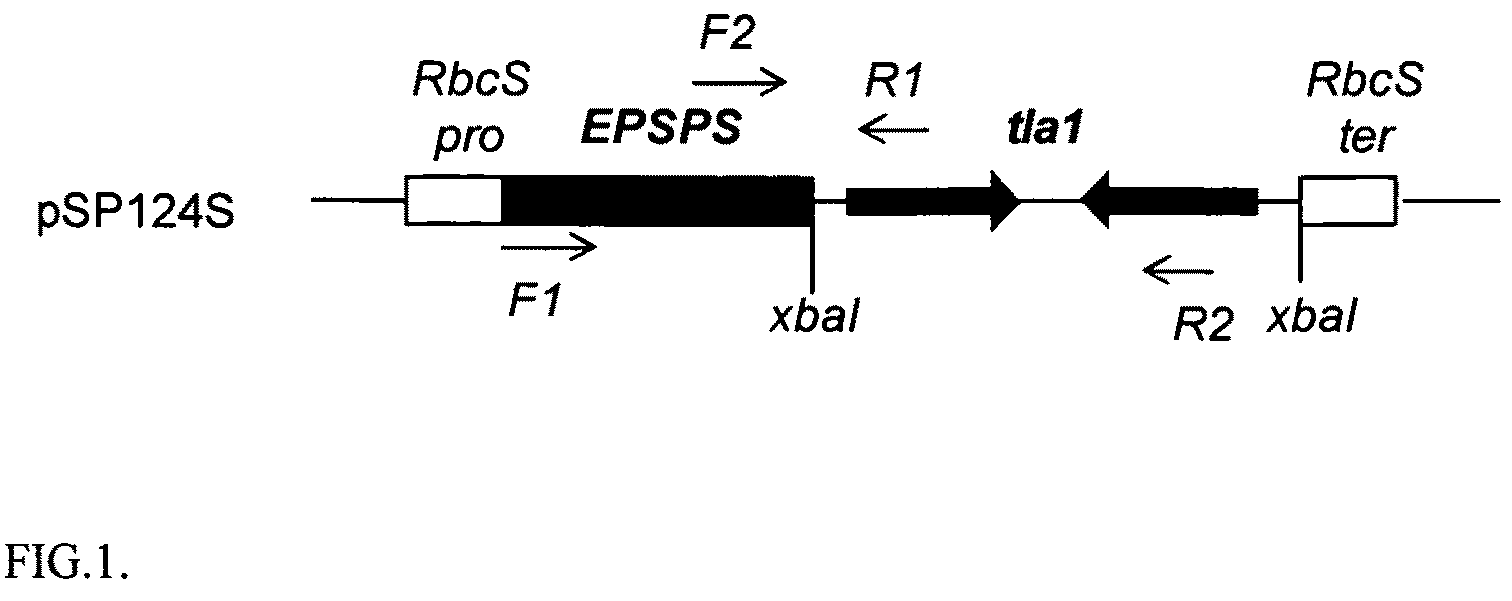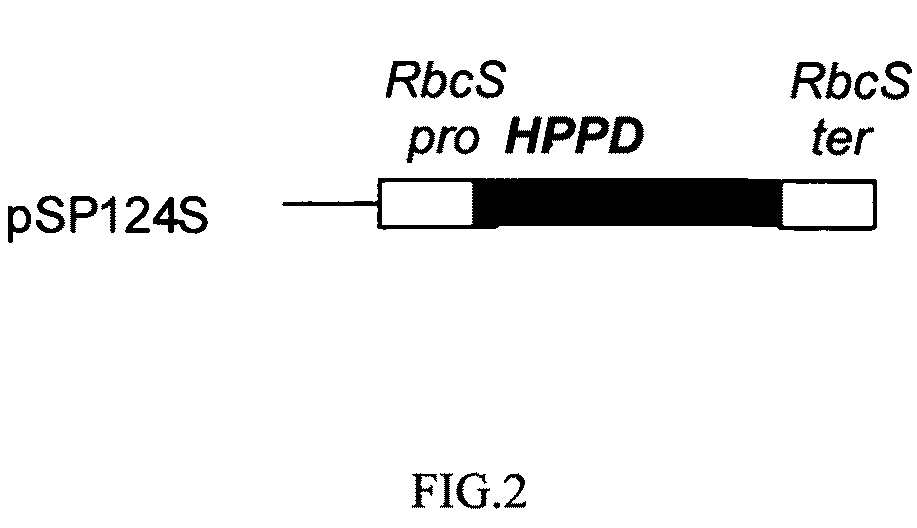Transgenically preventing establishment and spread of transgenic algae in natural ecosystems
a technology of transgenic algae and natural ecosystems, applied in the field of genetic mechanism for preventing the establishment of transgenic algae and cyanobacteria, can solve the problems of posing finite risks, affecting the survival of the species, and affecting the survival rate of the species, so as to improve the survival rate and reduce the risk of cyanobacteria, the effect of enhancing yield
- Summary
- Abstract
- Description
- Claims
- Application Information
AI Technical Summary
Benefits of technology
Problems solved by technology
Method used
Image
Examples
example 1
Prevention of Establishment and Introgression of Glyphosate Herbicide Resistance by Coupling with Mutation in the tla1 Gene Conferring a Smaller Photosynthetic Antenna
[0090]One of the traits suitable for Transgenic Mitigation in constructs with a primary, desirable trait is down regulation of a form of the tla1 gene (such as GenBank Accession #AF534571) that reduces the number of chlorophyll molecules in the antennae of photosystem 2. Such strains can live only in the high light intensity of bioreactors and shallow ponds, where they allow greater packing, but cannot compete with the superior light capture of organisms with full size antennae. Such organisms with full size antennae are kept out of the culture ponds by having traits such as glyphosate herbicide resistance. Rare algae or cyanobacteria introgressing the TM construct could also no longer compete with native organisms in natural ecosystems. In order to determine whether co-transformation of a desirable transgene with a mi...
example 2
Prevention of Establishment and Introgression of HPPD Inhibiting Herbicide Resistance by Coupling with a Selected Mutation a Gene Conferring a Smaller Photosynthetic Antennae
[0104]One of the traits suitable for Mitigation in constructs with a primary, desirable trait is down regulation of a form of the tla1 gene, as described in Example 1. Such modification of antenna size can be achieved by mutagenesis of the organism prior to introducing the commercial gene of choice. Such mutant strains can live only in the high light intensity of bioreactors and shallow ponds, where they allow greater packing, but cannot compete with the superior light capture of organisms with full size antennae. Such organisms with full size antennae are kept out of the culture ponds by having traits such as herbicide resistance, in this example resistance to inhibitors of the enzyme HPPD (4-hydroxyphenyl-pyruvate-dioxygenase). Rare escapes of algae or cyanobacteria bearing the HPPD gene in this background cou...
example 3
Prevention of Establishment and Introgression of Virus Resistance by Coupling with the Transgenes Conferring a Lowered RUBISCO Content
[0125]One of the traits suitable for Transgenic Mitigation in constructs with a primary, desirable trait is using an antisense or RNAi form of one or both of the subunits of the RUBISCO gene (such as GenBank Accessions XM—001702356, NC—005353) that cause the reduction of the number of RUBISCO molecules in the algae or cyanobacteria. Such strains can live only in the carbon dioxide levels artificially created by using carbon dioxide enrichment—such as from flue gasses from industrial sources to facilitate high levels of carbon fixation in bioreactors and shallow ponds. In this situation, lower levels of the low affinity RUBISCO are needed as the carbon dioxide levels in the ponds are at least 100 fold greater than ambient levels. Algae and cyanobacteria with less RUBISCO cannot compete in natural ecosystems with the superior carbon dioxide capture of n...
PUM
| Property | Measurement | Unit |
|---|---|---|
| recovery time | aaaaa | aaaaa |
| temperature | aaaaa | aaaaa |
| diameter | aaaaa | aaaaa |
Abstract
Description
Claims
Application Information
 Login to View More
Login to View More - R&D
- Intellectual Property
- Life Sciences
- Materials
- Tech Scout
- Unparalleled Data Quality
- Higher Quality Content
- 60% Fewer Hallucinations
Browse by: Latest US Patents, China's latest patents, Technical Efficacy Thesaurus, Application Domain, Technology Topic, Popular Technical Reports.
© 2025 PatSnap. All rights reserved.Legal|Privacy policy|Modern Slavery Act Transparency Statement|Sitemap|About US| Contact US: help@patsnap.com



